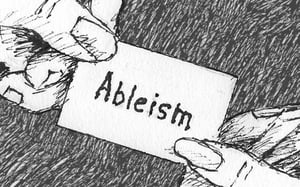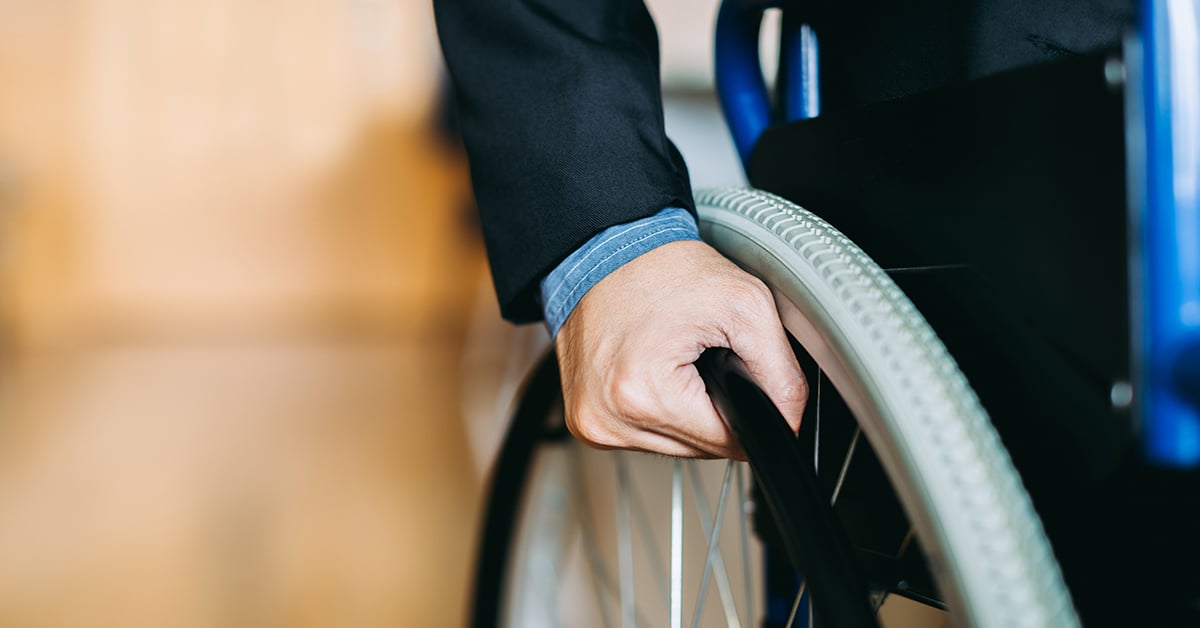4 Ways We Can All Challenge Ableism in the Workplace
I have an invisible disability that I almost never disclose. I have severe, degenerative and genetic hearing loss and it impacts my ability to communicate. Aside from fear of discrimination, I also — and perhaps primarily — don’t disclose because I have an internalized stigma about disabilities. Cultural messages about disabilities come strong and steady from cradle to grave, coupled with the seemingly invisible interface of assuming that people are worth only what they produce.

People with disabilities experience both an employment gap and wage gap that contribute to inequality and inaccessibility in our workplaces and in our communities.
One billion people across the globe — or 15 percent of the world’s population — have a disability. Somewhere between 110 million and 190 million people have severe disabilities. In the U.S. alone, more than 56 million people report living with some kind of disability — that’s almost 20 percent of the U.S. population.
The Census Bureau defines disability status as serious difficulty with hearing, vision, cognition, walking or climbing stairs, as well as difficulty with self-care and independent living. More than 38 million people in the U.S. reported having a severe disability — and people with severe disabilities working full-time earn approximately $1,000 less per month than non-disabled workers. And 13.3 million working-aged people with disabilities report experiencing difficulty finding employment because of their disability — and they face a resulting 70 percent unemployment rate.
That's the status — a lot of people have disabilities and they are paid a lot less for work. That might be unsurprising to some, and perhaps the biases we're discussing are at work in your mind, justifying themselves.
--
Ableism is defined as discrimination in favor of able-bodied people — and despite the Equal Employment Opportunity Commission (EEOC) monitoring disability-related discrimination at work, as well as on the basis of race, sex, age, religion, national origin, and other factors, workplaces remain plagued with inaccessible jobs, job descriptions, and workplaces.
Let’s discuss four ways we can challenge ableism in our work environments:
1. Don’t use ableist language.
“When a critique of language that makes reference to disability is not welcome, it is nearly inevitable that, as a disabled person, I am not welcome either.”
— Rachel Cohen-Rottenberg
Words have power. The pushback against political correctness and language is palpable — people do not like being asked to change. And yet, with all of that resistance, people do change. It can be hard to do, but if you start to pay attention to what is considered ableist language, you can have a long list of new words to learn and replace.
English is a variable language, and there can be many ways to say the same thing. Words have the power to dehumanize, otherize, and categorize people — to diminish experience and maximize harm. Being conscious about the harmful language we use can go a long way to creating inclusive atmospheres for all people.
2. Challenge your subconscious biases.
“No matter how respectful, compassionate, or professional I behave in public, changing my approach won’t affect you if you’re not willing to work on yourself, to question your assumptions about disabled people.”
— Neve Be
Without challenging our internal biases toward anything, we can create a subconscious realm where discrimination and toxic situations can fester. Stigma can make people feel alienated, discourage them from looking for support or help, and, ultimately, create hostile work environments. Challenging our preconceived notions can mean challenging constructs and ideas we hold as central to our identities. Growth hurts.
3. Don’t make assumptions about ability or competence.
“We do not see things as they are, we see things as we are.”
— Anais Nin
 Disability does not mean inability. The road to hostile work environments and hurtful discrimination is paved with good intentions. Making an assumption that someone needs help because they have a disability or assuming inability can create circumstances of paternalistic and patronizing behavior toward people with disabilities. Even when those situations are created through ignorance and inexperience, they create a negative space at work for employees with disabilities.
Disability does not mean inability. The road to hostile work environments and hurtful discrimination is paved with good intentions. Making an assumption that someone needs help because they have a disability or assuming inability can create circumstances of paternalistic and patronizing behavior toward people with disabilities. Even when those situations are created through ignorance and inexperience, they create a negative space at work for employees with disabilities.
Image: RootedinRights.org
4. Ask for help
“Do the best you can until you know better. Then when you know better, do better.”
— Maya Angelou
We are all learning how to live more harmonious lives and create harmonious spaces. In doing so, we have to be willing to admit when we have made mistakes, even unintentionally, and ask what we can do to make it right. In the words of my 4-year-old’s favorite character — Daniel Tiger, “Sayin’ I’m sorry is the first step — then how can I help.” And if you think that’s the last time you’ll be hearing the wisdom of Daniel Tiger’s Neighborhood woven into my writing, you have made the rookie mistake of underestimating the teaching power of Mr. Rogers.
It’s okay to admit when we make mistakes, especially when we offer conscious effort to change for the future. All we can do is the best we can with the information we have — with the caveat that we should always be seeking new information.
Having a disability can be a difficult experience. Acknowledging that we all have to uproot hurtful biases, stop using ableist language, and change our cultural ideas about people with disabilities can go a long way toward transforming our workplaces. When we establish a conscious mindfulness about refusing to perpetuate ableist work environments, proactively promote innovation in accessibility and face obstacles head on that are impacting the inclusivity of our cultures at work, we can raise the bar for candidates and employees with disabilities.
Leaders that remain resistant to organizational change often know they can become vulnerable to lawsuits, but what they might not consider is the loss to innovation and perspective that comes along with homogeneity. Organizations can have significant weaknesses in reaching, attracting and engaging customers and candidates alike with disabilities and risk messaging with damaging lack of awareness.
-min.png)




